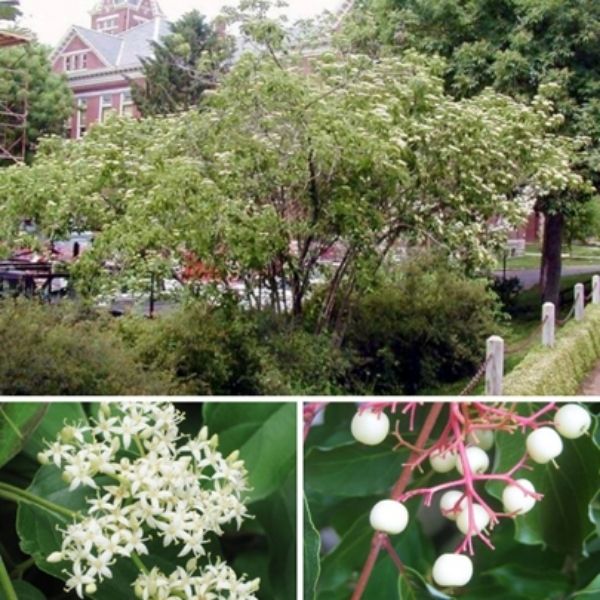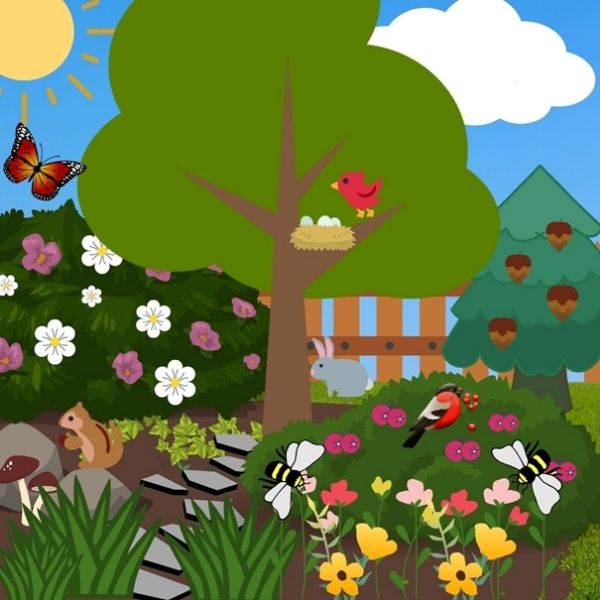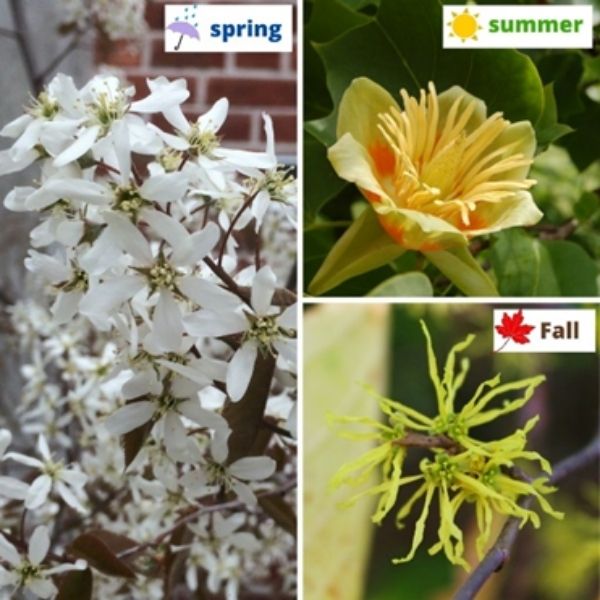Wildlife such as birds, mammals, bees and butterflies are an important part of the urban forest. In fact, urban trees and wildlife are interdependent, which means that the wellbeing of one intrinsically impacts the other. For example, trees provide food and shelter for birds, who then help distribute seeds and eat unwanted insect pests.
A healthy urban forest is one that is biodiverse, which means that it supports a variety of lifeforms like trees, wildlife and fungi. A healthy urban forest is also resilient, which improves its ability to resist stress (such as pests and disease) and maximize the benefits it produces (such as flood mitigation and air purification). Enhancing biodiversity can be as simple as planting a wildlife garden that supports a variety of lifeforms, which in turn help support each other. Check out our top three design tips for creating your own biodiversity-boosting wildlife garden.
Tip One: Plant Native Species
Trees, shrubs and perennials are considered native if they grew naturally in this area prior to European colonization. Native plants have co-evolved with wildlife, making them better equipped to provide the food, nesting and shelter resources needed to survive and thrive. Plus, since native plants have evolved to adapt to local climate and soil conditions, they typically require less maintenance.

Fun Fact: The grey dogwood (Cornus racemosa) is a favourite among birds and pollinators. In early summer, creamy white flowers emerge, offering pollen for native bees, such as the dogwood andrena mining bee. The flowers lead way to late-season berries that are a popular snack for many overwintering songbirds. Throughout the year, this tall shrub also offers a great nesting site for birds, such as cardinals and finches.
Tip Two: Plant Layers
Wildlife has unique habitat preferences including food, shelter and nesting. For example, some birds prefer nesting close to the ground in grasses, while others prefer to be higher in trees. Planting a multilayered garden with plants of varying heights, as well as colours, shapes and textures creates a layered canopy effect. Each layer becomes its own micro-environment attracting and catering to the individual habitat and food needs of various wildlife.

Fun Fact: When planting a multilayered garden, the best approach is to plant from tallest to smallest. Start by adding trees followed by shrubs, grasses and perennials, making sure that all plants have enough space to grow. Be sure to leave some open dirt patches throughout the garden for wildlife that prefer to create habitat in the soil.
Tip Three: Plant for Different Bloom Times
Adding plants that flower throughout the growing season can help attract wildlife to your garden year-round. It is important to choose plants that bloom from early spring to late fall, as this will provide wildlife with a continuous succession of nectar, pollen and other food sources, like fruit. If you are adding multiples of one shrub or perennial , plant them in clusters as it will help wildlife like bees forage for food more efficiently.

Fun Fact: The serviceberry (Amelanchier laevis) is one of the first trees to bloom in the spring and is a great food source for spring-emerging pollinators (left photo below). The tulip tree (Liriodendron tulipifera) is a summer bloomer popular among bumblebees, hummingbirds and butterflies (top right photo below). The common witchhazel (Hamamelis virginiana) blooms in late fall or early winter, usually after all its leaves have dropped, making it one of the last sources of nectar and pollen (bottom right photo below).
Want to start planting your wildlife garden? We offer a variety of trees, shrubs and perennials to help bring biodiversity to your backyard. Apply to our subsidized Backyard Tree Planting Program to plant native trees and shrubs for less.
Jess Wilkin is the Residential Planting Programs Operations Supervisor and an ISA certified arborist at LEAF.
The #BackyardBiodiversity campaign is a partnership initiative with the Toronto Wildlife Centre and is supported by Ontario Power Generation.
LEAF offers a subsidized Backyard Tree Planting Program for private property. The program is supported by the City of Toronto, the Regional Municipality of York, the City of Markham, the Town of Newmarket, the Regional Municipality of Durham, the Town of Ajax, the City of Oshawa, the City of Pickering, the Township of Scugog, the Town of Whitby, Ontario Power Generation, Ontario Trillium Foundation and GrandTrees/Canadian Trees For Life.
